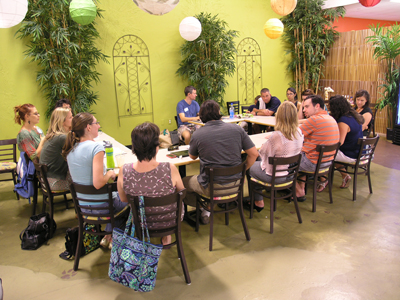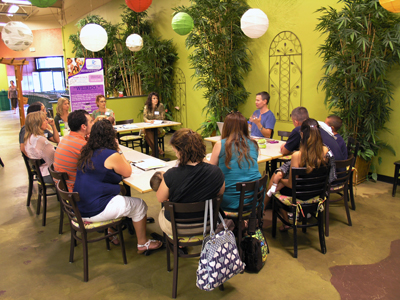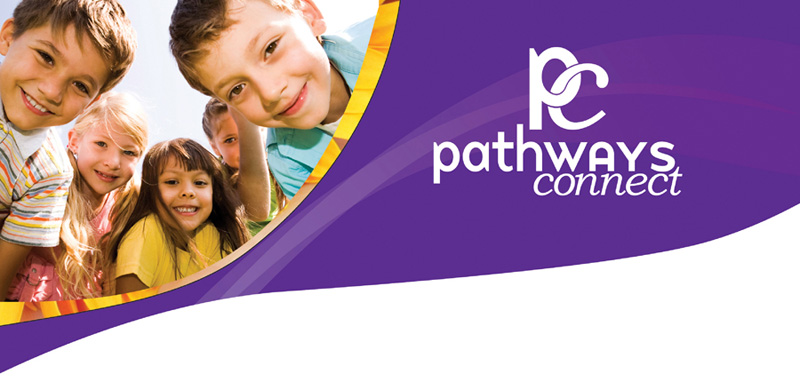John “Doc” Edwards
Cape Coral, FL
doc@mamaschiropractic.com
I’ll never forget the moment I was introduced to Pathways to Family Wellness magazine. Those of you who have been patients in chiropractors offices for a while will recognize what I’m referring to when I mention “The Binder,” the three-ring amalgamation sitting on the table in the reception area filled with articles about health, chiropractic care, and the failure of the existing health paradigm. For most of our modern era chiropractors have collected these articles at the beginning of their practices and stopped once they became too busy to update it. We were left buying subscriptions to magazines that featured articles we disagreed with or, for the more ambitious, forced to tear out all the drug ads every week. I’ll never forget the feeling I had when I finished the last article in my first Pathways. I’d finally found a magazine written by both chiropractors and non-chiropractors focused on health topics from my holistic perspective. There was a little epigenetics, a little attachment parenting, a little chiropractic and a little consciousness expansion. As I finished the last article I said to myself “That was refreshing. I could put the entire issue in my Binder!” Conditioned by my past experience, I dejectedly thought “I’ll bet they can’t pull off another one of those, though.” That was five years and 12 issues ago.
 I wasn’t fully aware of what the magazine could do for me until I contemplated starting my own practice. I had enrolled in the ICPA’s post-graduate program to better serve the expecting mothers and children in my practice, and as more families started coming in, I began to introduce them to one another. This left me feeling at-odds with the new federal patient-privacy laws that had recently been implemented, the ones that had some chiropractors scurrying to erase their “Thank You for Referring…” boards and pulling down the photos of all the children who had been adjusted since the practice opened. That reaction always seemed strange to me, especially when I noticed that families scheduled around the same time seemed to enjoy talking to each other about their mutual struggles with friends or family members not understanding the choices they were making. Why in the world would a health care provider, who based his practice in the same values these families were talking about, purposefully drive a wedge between these growing bonds? Wouldn’t it make much more sense to encourage interconnectivity? Shouldn’t an office do everything it could to provide an oasis against the harsh judgments of a stagnant worldview that didn’t “get it?”
I wasn’t fully aware of what the magazine could do for me until I contemplated starting my own practice. I had enrolled in the ICPA’s post-graduate program to better serve the expecting mothers and children in my practice, and as more families started coming in, I began to introduce them to one another. This left me feeling at-odds with the new federal patient-privacy laws that had recently been implemented, the ones that had some chiropractors scurrying to erase their “Thank You for Referring…” boards and pulling down the photos of all the children who had been adjusted since the practice opened. That reaction always seemed strange to me, especially when I noticed that families scheduled around the same time seemed to enjoy talking to each other about their mutual struggles with friends or family members not understanding the choices they were making. Why in the world would a health care provider, who based his practice in the same values these families were talking about, purposefully drive a wedge between these growing bonds? Wouldn’t it make much more sense to encourage interconnectivity? Shouldn’t an office do everything it could to provide an oasis against the harsh judgments of a stagnant worldview that didn’t “get it?”
I opened my clinic armed with my portable table, a box of pregnancy brochures and 50 copies of Pathways. I bargained with the local health food store to let me host a meeting on the last Friday of every month, and I picked an article or two from Pathways to discuss. As my attendees grew from just my wife and I to around five other people, I asked for some feedback.
There were four things I ended up implementing that helped grow my group. First, I listened to my patients talk about the articles they liked, then found people in the community who could be guest speakers on that topic. The second was understanding that my group held multiple needs simultaneously, and accepting that I couldn’t pick just one meeting type and stick to it. The third was coming up with a plan for inviting my existing patient base into our Facebook group and committing to keeping it like a farmer’s market- fresh and local. The final step was playing bigger than I am, to be an umbrella sponsor that would help support community events.
Listening to your patients is harder than it sounds, because you have to be a little aggressive in your desire to ask questions. The nice thing about the Pathways magazine though is that the articles really lend themselves to discussion. There are quick little ones that take five minutes, and deeper thought provoking ones that can shift paradigms. The best plan I’ve come up with for meeting topics so far has been from utilizing a couple resources. First, I’d set aside an hour to read through my copy and pick possible topics we’d discuss that quarter. Second, during my office hours I’d ask people in person to check out a specific article and find out what they thought about it. Third, I’d post related material on Facebook and ask my followers what they thought about it. This is one of the areas where Pathways Connect makes my life easier. I have a file folder I call Pathways Memes, and every time I see either the ICPA, Pathways, or another source like AmpLIFEied post a photo with text on it, called a meme1, I download and save it in my folder. When I have the time to surf or check my email, if I see something I immediately post it. But if I don’t have something, I don’t waste time searching or thinking; I pull something from that folder instead. Then I looked to see who liked the posts. If there were professionals among that list, I sent them a message with my request to be my guest. I found that I needed to contact people at least a month in advance, and learned from having two guests “miss” the meeting that I needed to be prepared as well. Confirming the guest the week of the event and the day before is also a really, really good idea.
I have to admit here, I’m not a well-prepared facilitator. I’ve learned that I have to read the magazine when I first get it because there have been many, many meetings that I’ve crammed the article in within 15 minutes of the meeting starting. Let me tell you- the people at Pathways knows we all have a tendency to do this. Let me also tell you- and they’re not going to like this- you don’t actually have to read the articles. The dialogue guides give you the basic points, and if you ask your group open-ended questions, no one is the wiser. Try it with me: “How do you feel about that?” “Does anyone relate to the experience she’s talking about here?” Now, read the articles because they’re well-written. But if you don’t get the time, know you don’t have to freak out about it.
 The most commonly asked question I get about my group is when I host my meetings and who’s allowed to come. The answer is… it depends on which meeting you’re talking about. I used to only have one meeting time- Last Friday of the month, 6 pm. After a year I decided to start showing the movies recommended in the back of the Pathways magazines. I hosted Thursday night movie night monthly for 5 months, then ended up in an interesting conversation with my group online about why some people could come, and why some couldn’t. For my group, the most important (and best attended) meetings allow them to gather as families. So, starting this year, I planned out six daytime weekend family events, and on alternating months I’m showing movies. The key to this, though, is asking some of my members to plan those meetings. It gives me a committee, so to speak, of involved members to rely on for when I like to do larger events. I still keep my last Friday of the month an adult education meeting, which means nursing aged children are always welcome. But people know they have options.
The most commonly asked question I get about my group is when I host my meetings and who’s allowed to come. The answer is… it depends on which meeting you’re talking about. I used to only have one meeting time- Last Friday of the month, 6 pm. After a year I decided to start showing the movies recommended in the back of the Pathways magazines. I hosted Thursday night movie night monthly for 5 months, then ended up in an interesting conversation with my group online about why some people could come, and why some couldn’t. For my group, the most important (and best attended) meetings allow them to gather as families. So, starting this year, I planned out six daytime weekend family events, and on alternating months I’m showing movies. The key to this, though, is asking some of my members to plan those meetings. It gives me a committee, so to speak, of involved members to rely on for when I like to do larger events. I still keep my last Friday of the month an adult education meeting, which means nursing aged children are always welcome. But people know they have options.
The third component, fresh and local, came from an experience I had building my practice. Before I moved to SWFL I contacted a local midwife, because I planned on seeing a lot of pregnant women, and she added me to a local group she admin-ed called A Lil Bit Crunchy. There were 127 members in that group when I joined in August of 2011, all of which were either her clients or friends in our area. In the span of 18 months Crunchy grew to over 2,000 people from all over the world. I used that platform to discuss chiropractic, but found that as the group grew the impact for my local market shrunk. So when I started my Facebook group, Pathways Connect SWFL, I decided to check every person who joined and see if they were in our area. If they weren’t, I simply looked up their zip code to find another ICPA chiropractor in their area and told them to contact them about starting a group. Now an interesting thing has happened. The local people in Crunchy are starting to turn to my group to ask questions for local providers. Guess who’s perspective they’re going to get now? I grow that group with every single new patient, phone inquiry, and attendee at my Wellness Orientation Workshops by asking for an email address. You take the email, put it in your “Add Member” group, and if they want to accept it, you personally welcome them.
Keeping it fresh doesn’t actually require a daily commitment… I kind of fibbed to you earlier. The truth of the matter is you can take some time on a website like HootSuite and schedule your posts. The nice thing about it is that these programs let you see what time most of your clients see your posts to maximize your impact. If you spend an hour on an off-day scheduling your week’s worth, or your month’s worth if you’re really good at planning ahead, it makes the task much, much easier. But new content, asking questions, using photos, tagging your opinionated jabbermouths… it’s all key to having an engaged group that people like to check and chat on.
I met Ina May Gaskin at the Freedom for Family Wellness in 2010. I honestly didn’t know enough about her to be awestruck, which was actually pretty fortunate. I tend to get that way around people I admire, and I’m working on it. My midwife friend and some of my patients started talking about hosting a family expo, and she said Ina May had a new movie coming out- how great would it be to host a screening. I told the group that I’d met Ina May, and I’d ask the organizers if they’d help me get back in contact with her. No promises, though. But we got her. The Green Family Expo taught me a lot. It was my first major event since I planned concerts in college, and we were by most measures successful: We raised $10,000, around $2000 we got to keep for the next event; we had around 5,000 people walk through our expo. We had a great turn out for some of our marquee events. But the event left the committee of volunteers so exhausted that we really didn’t ever want to do it again. And honestly, I didn’t get a lot of patients out of it.
So here’s where I messed up. Remember the small family events we’re having throughout the year? The purpose for those is actually research. We’re trying to find out from the families what they like to do, what they’ll share, what the best way to advertise is and whether or not the people who organize the event liked doing it. Next year we’re going to take what we learn and build a large scale event. In hindsight, GFE was build backwards from a place of thinking we knew what people wanted, then providing it and telling people “Look how great this is, you want to come to this!!!” We had too many speakers, too many events, and too many cooks picking things like logos apart. In actuality, I think you need to do it the other way. If you ask people what they like to spend their Saturday doing, then build an event where they can do it, I think it flows easier. If you create a committee structure and let people do the thing they love to do, then run with it, I think it helps the workload. Pathways is the perfect framework for what most of you are going to find your patients like to do: Engaging in conscious parenting, promoting natural lifestyle choices. Have some patience as you collect your advocates, your workers, your guest speakers, and build your cultural authority.
You have been given an opportunity to run a turn-key marketing system in Pathways that works at a social media level, a sit-down meeting level, and at a community building level. It’s all there for you. You don’t have to think about a darn thing. You don’t have to write a blog. You don’t have to write a newsletter. You don’t need to be a graphic artist. You don’t need to re-invent a marketing calendar.
You do need to figure out how to give the magazines away. You do need to stay committed to a system for engaging with people online. You do need to spend time every month figuring out which materials you’re going to implement, where. You do need to make your events fun. You do need to play. You do need to show up and smile. I don’t think that’s asking too much for one of the most powerful practice building tools you’ll ever see.
1.) Wikipedia: …coined by the British evolutionary biologist Richard Dawkins in The Selfish Gene (1976)[1][5] as a concept for discussion of evolutionary principles in explaining the spread of ideas and cultural phenomena. Examples of memes given in the book included melodies, catch-phrases, fashion, and the technology of building arches.
